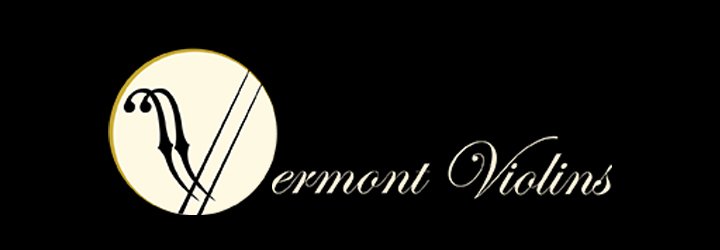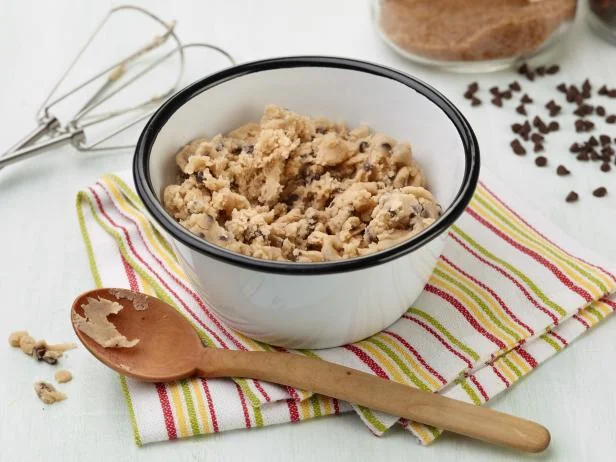Music Central
Can Music Ever Be Centrally Controlled?
I was surprised to read (The Economist, 12/21) that it was Chile's short-lived President, Salvador Allende, that first tried in 1973 to implement a computer-driven HQ for managing a complex economy. He brought in a Super-Computer (probably similar in superness to today's calculator), built a command center to house it (apparently borrowing features from the Brig of the Starship Enterprise, but adding a minibar) and got to work planning and controlling the newly nationalized economy. His regime was overthrown by the brutal Pinochet regime before he could make much of a start on it...and Pinochet preferred the tried and true old fashioned ways of rule: torture, suppression and fear.
Read More
Tips On Safe Instrument Shipping
How Can I Safely Ship a Stringed Instrument?
Can Violins or Cellos be shipped safely? Absolutely. At Vermont Violins, we receive and ship instruments almost daily and in the many years we have been doing this, we have only seen damage twice and both times the damage was the fault of the packing. While twice is a very, very, very low number, we know how tragic this event can be so we wanted to share some instructions on how to pack an instrument safely so that it can land at its destination in the same condition as it left.
Read More
Your Instruments Are Fragile. Handle Them With Care!
What Should I Do If I am Travelling with My Instrument? Tips for Safe Travels!
Are you moving across country? Going on a long-distance vacation? Can’t bear to be without your trusted violin or cello? Taking your instrument to a new place can be fraught and nerve-wracking, but with some care and precaution, travelling can be perfectly safe.
We travel routinely with our instruments: we rarely step onto an airplane without a violin or cello. But we take care to make sure that our precious cargo arrives safely. Here are some carefully considered tips.
Read More
Community Music
El Sistema in Vermont – Supporting Community Music for Kids!
As part of our commitment to giving back to the communities we serve, and to foster a love for music among all our children, Vermont Violins has been an active supporter and partner to many string programs serving under-served and financially challenged communities in our region. From Winooski to St. Johnsbury, we have been providing low-cost instruments to help sustain programs that bring violin instruction to schools that are dedicated to enriching the lives of even our states least privileged individuals.
Read More
Investment In Violins
Do Violins Make Good Investments?
The short answer is yes, absolutely. According the British newspaper, the Telegraph, when it comes to a safe haven for your money, little can beat a rare old violin. While gold, property, and other investment commodities often show short term rewards, the ups and downs of a mercurial marketplace can offset gains with sudden and often surprising losses. Witness the property crash in 2007 which precipitously shattered the notion that property, as investments, were “safe as houses.”
Read More
Fiddleheads
What is Fiddleheads?
Fiddleheads is a program of Young Tradition Vermont, hosted by Vermont Violins and the Burlington Violin Shop. It is dedicated to bringing kids together to learn and enjoy traditional music in all its forms in a low-key, non-competitive, session. Kids of all levels are invited to join a monthly play-together, led by a master fiddler or musician recruited from the professional traditional music community of Vermont and her neighbors.
Read More
Baroque Bows
A Brief History of Baroque Bows
Although the modern conception of the violin has been pretty firmly in place for over a century, there was a significant era of innovation in violin and bow making in the early 19th century. During this period, music was changing dramatically, moving out of the early Baroque era into newer forms of music which put new demands on the instruments and the bows. A need for more power and response, eliciting fuller voices became essential, and violins were evolving to meet this need. Bows were now being charged with more legato, long-note playing, and the music was written to accommodate the larger opera houses being built throughout Europe.
Read More
Beginner Guide To Electric Instruments
The Absolute Beginner's Guide to Going Electric
Electric instruments are everywhere in today’s music scene. You don’t have to look far to see an Indie band with an electric cellist, a punk rock band with an electric violinist, or even hip-hop using electric violins (looking at you, Black Violin!) Electric string instruments are being used in concerts by the Wu-Tang Clan, Kanye West, Katy Perry and more surprising artists. Going electric is a portal for a string musician into the entire world of genres outside of classical and traditional music. Electric instruments give string players flexibility to change not only their volume but their entire sound by adding filters, effects, and more to their set up.
Read More
Contemporary Music Concert
Why should I go to a contemporary music concert?
I have played some pretty crazy music as a violist. Music that looked more like a scientific analysis on the page than notes. Music that used my bow as a percussive instrument rather than a string instrument. Music that asked me to make sounds I’m pretty sure my instrument will never do again. As a performer it was fun, challenging, exhilarating! But if I were asked to sit in the audience – would I have sat in that audience? What was the goal? Why would I want to go to a contemporary music concert as a parent of a string instrument student – and should I take my child?
Read More
Marit Danielson
A Brief Interview with violin-maker Marit Danielson
I sit down with Marit Danielson to ask her about her thoughts on women in music. Though Marit is a graduate from the Manhattan School of Music in Viola Performance and of the North Bennet Street School in lutherie, I have to research a bit to get these pieces of information. She is a prolific violin maker and bow expert. She has worked with some of the premier makers in the United States and has sold countless violins to professional players nationally and internationally. She is also humble and would much rather be on a walk with her dog, Bromley, than having me ask her questions while she is being audio recorded.
Read More
Instrument Seams
Why do seams open? What do I do if I have an open seam?
How do you know a seam has opened? Perhaps there was a “pop”, or your instrument started buzzing. Sometimes it is more obvious, like the large 4” gap between the back and the rib on the bottom of your cello. The seams are the equivalent of the canary in the coal mine for string instruments in the winter. They are the release valve that opens, hopefully, before the tension causes the top or back plate to crack.
Read More
Right Time To Step-up Your Instrument
Why Step-Up?
Determining the right time to Step-up your instrument or your student’s can seem overwhelming, especially given the variety available to choose from. Though many violins and violas are similar in appearance, not all are created equal, and playing the right instrument can make a world of difference for developing talent. With the guidance of both your instructor and Vermont Violins’ friendly staff, we can help ensure stepping-up to a new instrument will be a fun and exciting stage in your musical growth.
Read More
We Love Music & Cookies
Practice Cookies
There is nothing like a cold, snowy day to inspire a warm cookie baking session. The icing and decorations provide a colorful contrast to the stark white flakes floating down our windows. The cookies warm us up as we play games or come in from yet another round of shoveling.
Read More
Pernambuco vs. Carbon Fiber Bows
Pernambuco vs. Carbon Fiber Bows
What is the relationship between the bow and our instruments? Why do different bows make the instrument sound different? How do I choose the best bow in my price range? Should I try a carbon fiber bow as well as a Pernambuco bow?
Massimo Lucchi described the relationship between the bow and the violin this way: the bow produces the vibrations, the violin acts as an amplifier and transmits the vibrations. Coming from a bow making family, Massimo emphasizes the importance of the bow. Interestingly, professional players often converge with Massimo’s perspective over time, choosing an instrument and then a bow to develop the tone, dynamic range, and depth of the instrument.
Read More
Evaluating if your child can, should, or wants to continue with strings??
Developmental Differences and Why Your Kid Is Doing Fine
Parenting a young musician is as much of a commitment as being one. As the school year wraps up, many parents are evaluating if their child can, should, or wants to continue with strings. These questions may be further convoluted by doubt in a child’s abilities or motivation. Why won’t my kid practice? Why do other kids sound better? Should we throw in the towel? To shed light on such matters, it helps to look at where music education fits in to general childhood development. I’ll spoil the end before I get there; your kid is doing fine. We’ll get to those individual questions in future editions of this column.
Read More
LucchiMeter
History of the LucchiMeter
“I often happened to be working on two sticks that, when first examined, appeared to share the same characteristics, but ended up as bows with completely different qualities. This was the eternal dilemma – how to choose the most suitable wood.
They say that the famous violin makers of the past made great progress by noting that the speed with which wood propagated sound was a fundamental element in checking the quality of the sound.
For me, the only possible solution in those days was to travel all over Brazil with a friend and his son who lived there, or to go with Massimo to Germany…
Read More
What should be the best approach while buying a string instrument?
How do I choose my instrument?
Check out our 4-part video series on how to choose an instrument! Kathy, a professional violist and owner of Vermont Violins, will walk you through the steps required to buy an instrument as well as some tips along the way to ensure you find the perfect match.
Read More
When Should I Get My Instruments Checked?
Should I Have My Instrument Checked Up By a Luthier?
Have you ever: picked up your violin and thought: "you know, I used to really love this violin....I wonder why?" Chances are, the violin is out of adjustment.
As weather changes and humidity levels rise and fall, instruments start to change. Wood expands and contracts and as it does, the set ups, once perfect, not longer perfectly match the instrument and the tonal quality suffers.
Read More
Bow Rehair
When do I need to rehair my bow and why?
In general, we recommend a bow rehair every six months to a year, ideally at the beginning of the winter and summer. Rehairing maintains the physical condition of the bow and enhances playability. Bowhair is extremely responsive to humidity conditions. In fact, historically, bow hair was used on ships to monitor changes in the air’s relative humidity. The hair stretches in warm, moist weather and contracts in cold, dry weather. When we rehair a bow, it is difficult to find a length of hair that works for both extremes in our climate – we can have 80% relative humidity in the summer and 10% relative humidity in the winter. The hair can shrink as much as an inch going from summer to winter. For some bows, in particular “soft” bows, the sticks flex more when the hair length changes between seasons.
Read More




















